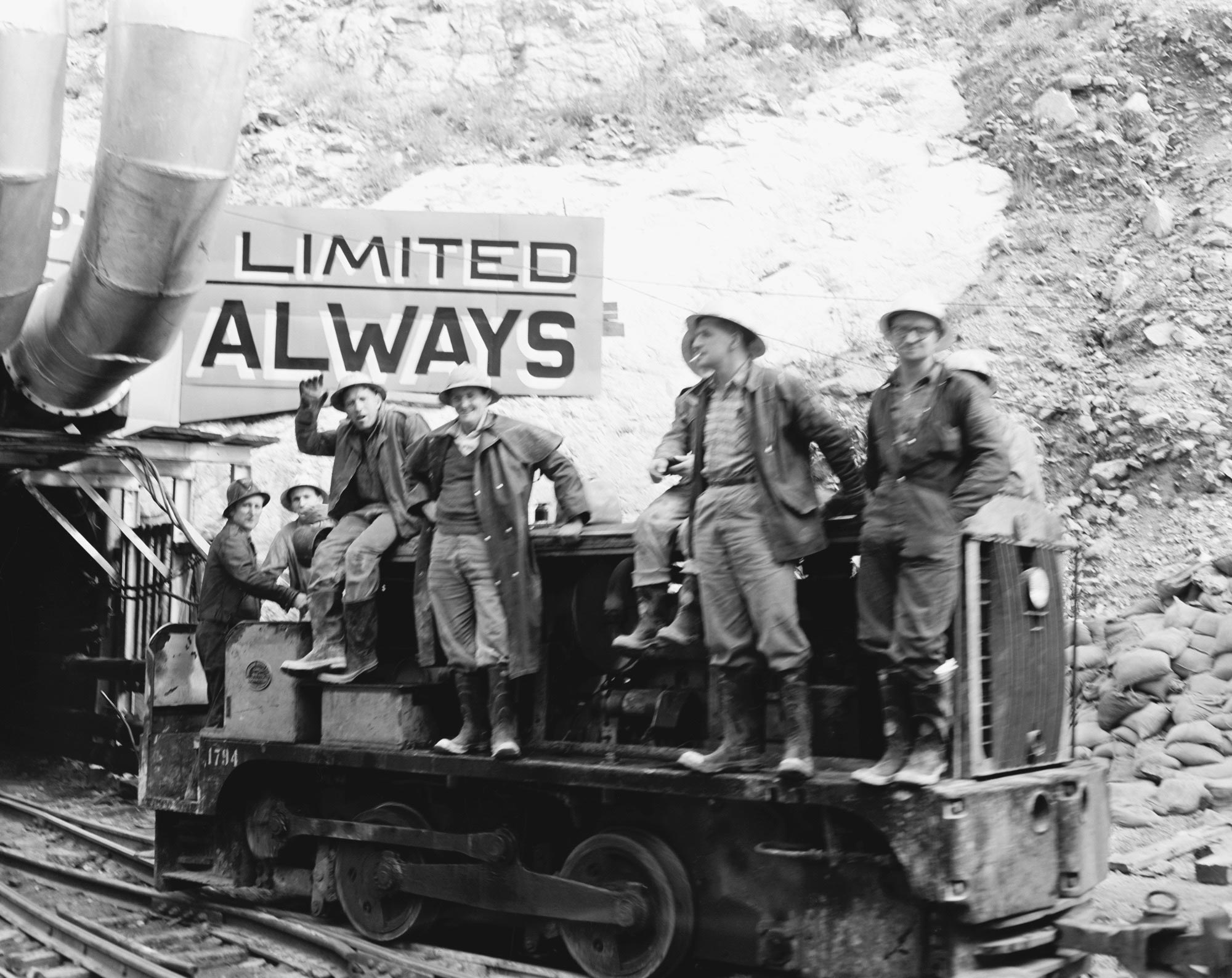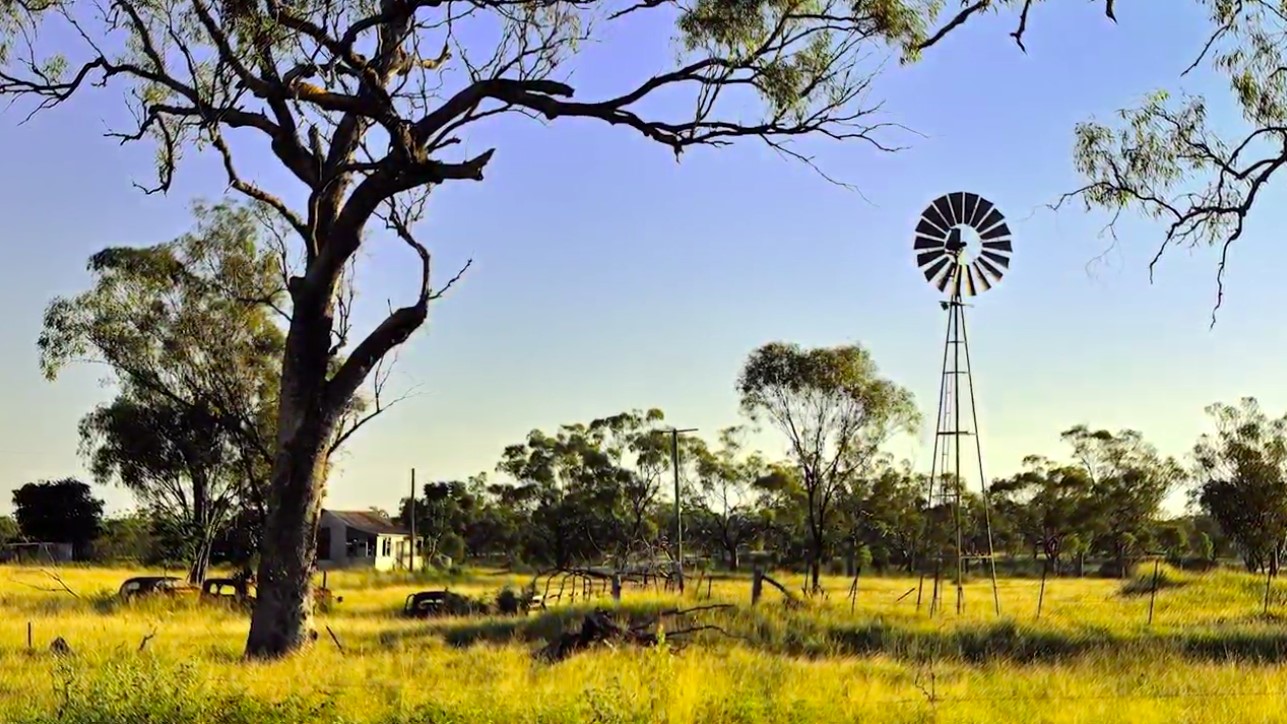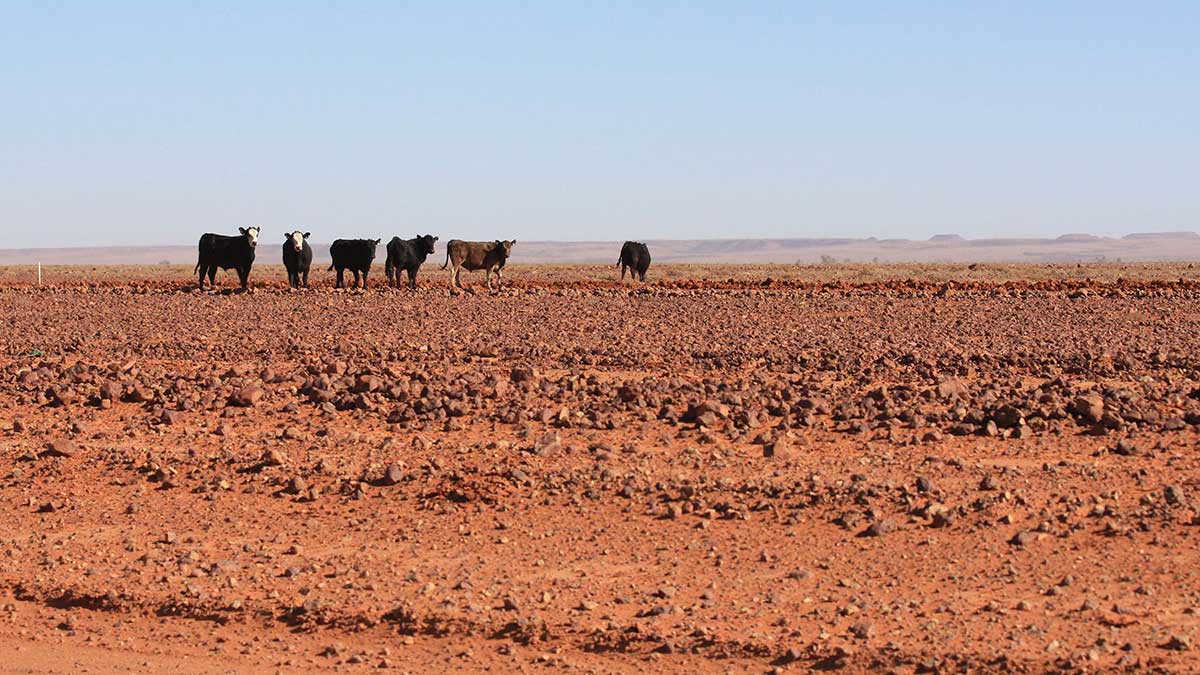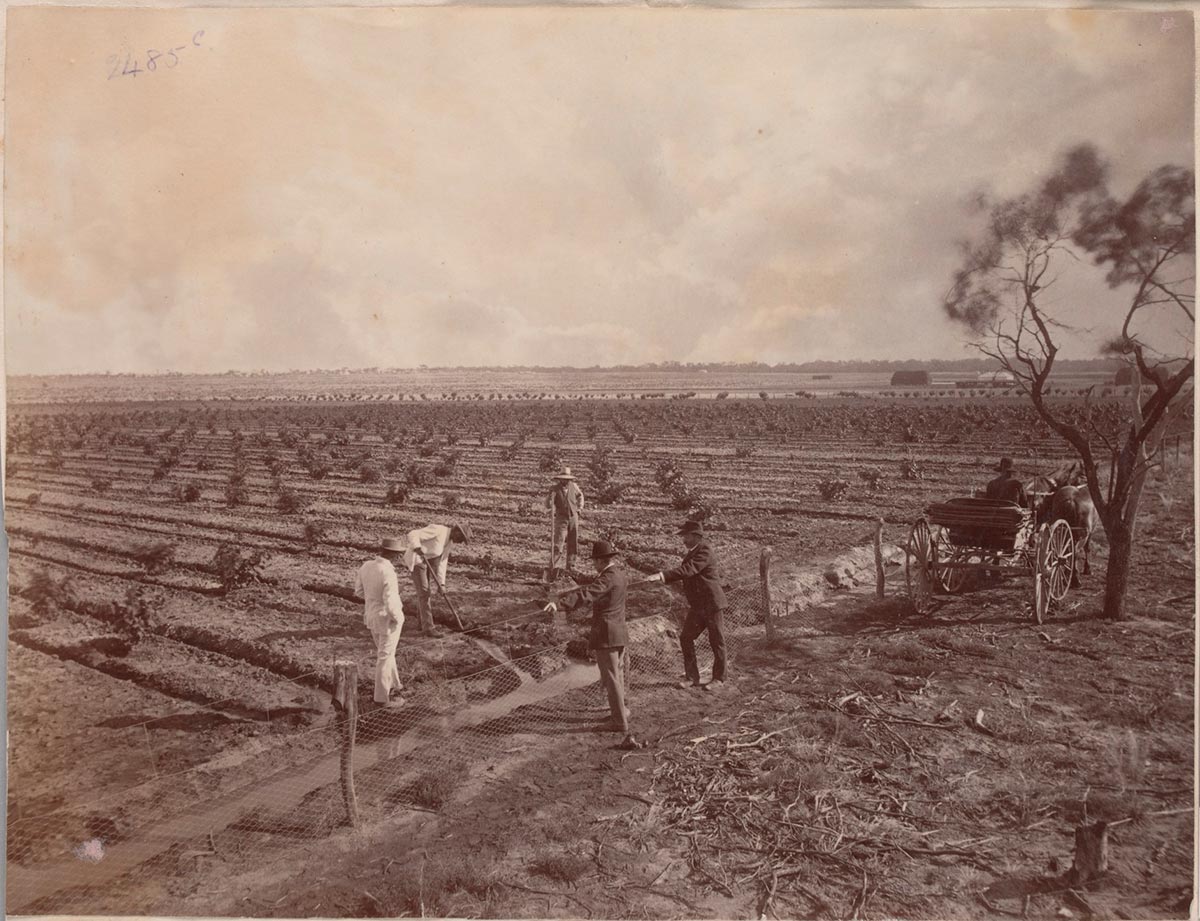Australian Journey Episode 03: A Wide Brown Land interview
Adaptation and environmental management in Australia with Susan Carland and Ruth Morgan.
View transcript
+ -SUSAN CARLAND: Aboriginal and Torres Strait Islander people should be aware that this series may contain images, voices or names of deceased persons.
BRUCE SCATES: Welcome to ‘Susan Carland: In Conversation’. This interview is a supplement to Episode 3 in the Australian Journey series, ‘A Wide Brown Land’.
SUSAN CARLAND: All around me are West Australian trees and shrubs and wildflowers. This beautiful native garden is set in the heart of Kings Park, overlooking the city of Perth and, joining me today is another West Australian native, one of our country’s leading environmental historians, Dr Ruth Morgan.
SUSAN CARLAND: Thanks very much for joining us, Ruth.
RUTH MORGAN: My pleasure – thanks for having me.
SUSAN CARLAND: I love your city and I love these flowers. Can you tell me how have they adapted to the Australian environment?
RUTH MORGAN: Well, anyone that comes to Western Australia during spring knows how amazing the wildflowers here can be and what we have in the south-west is all these amazing native plants that are so unique. We live in a biodiversity hot-spot basically and something like 4,000 native species. And what they do is, they’ve got this incredible ability to use water very efficiently, so whatever water they can get their little roots on, they suck it right up.
And what challenges that we find in, in the south-west, once we’ve been clearing a lot of land is that the new introduced crops don’t use water in the same way. So, the way that these native species interact with the soils and the water there is that they suck all that water up and keep the water table down. But with introduced crops, like wheat and barley and rye, they actually aren’t so efficient. And so, what problems we have there is that the water table actually starts to rise to the surface, bringing up with it all the salts that are stored underground. There’s something like 70 to 100 kilos of salt crystals underneath every square metre of land in the wheat-belt.
So, it’s a real challenge for our farming communities – how to deal with these changing ecosystems that they’ve created.
SUSAN CARLAND: So, it sounds like these introduced crops are actually damaging the Australian landscape.
RUTH MORGAN: Well, it’s – it’s a bit of both, really. We have – we’ve had – enormous benefits from crops, from wheat and barley and rye, for the enormous benefits they’ve brought to rural communities, for export income, for feeding Australians. But the downside is that they do interact with our soils and water table in quite a different way to what the native vegetation would do and, with a rising water table, it means that a lot of fertile productive land is actually being spoilt.
And so, we can’t grow as many crops anymore – that land becomes unusable for quite a long time, and very difficult to rehabilitate, if at all. Then we have salts flowing into our streams and river ways which then affects the quality of water that we have available to drink.
So, there’s all these flow-on effects from what might seem quite a discrete area of the wheat-belt that land clearing has been happening since the early 20th century – but the flow-on effects of those changes are enormous, and they affect people in rural communities right through to our suburbs as well.
SUSAN CARLAND: So, this ground cover helps preserve the water but what about big trees like this – how does forest, for example, help preserve water?
RUTH MORGAN: Well, seeing as we’ve got a few of them around here in Kings Park, let me show you.
SUSAN CARLAND: Okay. And Ruth, this is a native forest.
RUTH MORGAN: That’s right. These are the sorts of trees that you would come across in south-western Australia. We’ve got a tuart behind you, there we’ve got a karri, we’ve got Rottnest tea-tree.
These are the sorts of mix of species that you’d find in a south-west forest.
Unfortunately, though, since the 1880s logging has been very prevalent in in the southwest of the state, because trees like the karri, the marri, the jarrah – they’re great hardwoods and so they’ve been a really valuable timber basically for Western Australia. So unfortunately, you don’t see patches like this as much as you might have in the past.
SUSAN CARLAND: And what would be the environmental impact if a forest like this is felled?
RUTH MORGAN: Well, it has an enormous impact, not only on what you might expect in terms of fauna and flora but a huge impact on the way that water and soil interact with each other. When you’ve got a full stand of enormous trees, like a karri or a jarrah forest, that canopy that they produce offers a kind of buffer when rainfall starts to come down. Then you’ve got this extra layer of insulation on the soil from the leaf litter. And together, these two layers are really protecting the soil from the impact of rainfall, protecting it from erosion and also allowing that water to percolate more slowly into the ground, and so that water table isn’t being overcome so quickly and so it can absorb that water much better.
SUSAN CARLAND: I know that drought and forest disappearing has a big impact on regional and rural Australia but in your book, ‘Running Out’, you also said there was a significant impact on the loss of water on urban Australia. Tell us about that impact.
RUTH MORGAN: Well, that’s the thing. I mean we quite often forget that cities are also affected by droughts and places like Perth and Adelaide are really at great risk of running out of water from climate change and so some experts have predicted that places like Perth may well become ghost towns in the future due to climate change. Let me show you what that might involve.
SUSAN CARLAND: Okay. Here’s Perth down there nestled into the Swan River and, when I see all this water, it’s hard to believe that we’re running out.
RUTH MORGAN: Well, this is this Swan River, and we don’t actually get our water supplies from there. In fact, the major tributaries to the Swan already have dams on them so that fairly limits the amount of water that comes down. Basically, we’ve got the Avon River supplying the Swan, so it’s not water that we tend to drink although plenty of people use the river for all sorts of activities. The problem for the Swan is problems of water quality.
We have issues with too many nutrients going into the river as well as problems around acidification, and this all affects basically what we can do with the river in terms of protecting the flora and fauna and actually enjoying the most of what that river has to offer us.
SUSAN CARLAND: So, what do you mean by that?
RUTH MORGAN: Well, the challenge is, for not only the Swan River but a great deal of our waterways, it’s not only water quality – which is a huge issue, we can’t use it necessarily for the things that we want to – but really water quantity.
And the big problem for Perth and the greater south-west is a drying climate and that’s really affecting basically the water supplies that are available to us. The other challenge though is that we could use the water that we do have a whole lot better.
SUSAN CARLAND: In your book, you said that Australians need to develop water literacy. What do you mean by water literacy?
RUTH MORGAN: Well, with water literacy what I meant by it is that we need to be a lot more sensitive to the ways that we not only use water – because we do a really good job with how we use water in terms of we’ve really reduced the amount of water we use per capita so people have really responded well to conservation campaigns. The challenge is though, with a growing population and the kind of lifestyles that we want to live, they’re not always that sensitive to the water supplies that we have available to us.
The other factor, particularly in Perth – something that you might notice here being from the east coast – is that rainwater tanks aren’t all that popular and that’s an interesting one because Perth actually does get more rainfall than a lot of Australian cities, like Melbourne even, but it doesn’t fall consistently across the year. So, if you had a water tank, a rain tank in Perth, you’ll get a lot of water in the winter but not much in summer.
The other thing that we could do better in Perth is capture all that runoff. Now when rains come, when we’ve got an urbanised landscape like we see below us, the water that would usually run through the sandy soils and recharge our aquifers isn’t going there, so if we conserve plenty of our native vegetation, plenty of natural waterways, we can try to mimic those natural water flows and make the most of the rainfall that we do get.
SUSAN CARLAND: We began this episode learning about CY O’Connor and the development of the Mundaring Weir. One of the things O’Connor wanted to do was try to draw the rivers back inland. Is there anything that we could learn from his story?
RUTH MORGAN: CY O’Connor was one of many visionaries in the, I suppose, the first half of the 20th century, in the late 19th century and these were great men of vision and they had incredible schemes to make the most of the water in this very arid continent. When we look now to our dams in the Darling Ranges, Mundaring Weir is out there somewhere. In fact, we’re not relying on those dams anymore. In Perth, we’re actually very reliant on desalinated seawater, down on the south coast there, towards Kwinana, as well as our groundwater, enormous stores of groundwater. And in fact, what’s happening with Mundaring Weir now is that there’s so little rainfall going into it we’re now pumping desalinated water and groundwater into that weir to keep it structurally sound.
SUSAN CARLAND: Ruth, you’ve given us a lot of food – or water – for thought. Thank you so much for your time.
RUTH MORGAN: Pleasure, thanks for having me, Susan.
Activities
1. What environmental issue does Dr Ruth Morgan discuss in the video?
2. What are the challenges facing the Australian city of Perth in relation to water?
3. What does Dr Morgan see as critically important if Perth and other parts of Australia are to avoid becoming 'ghost towns'?
Details
+ --
Types:












